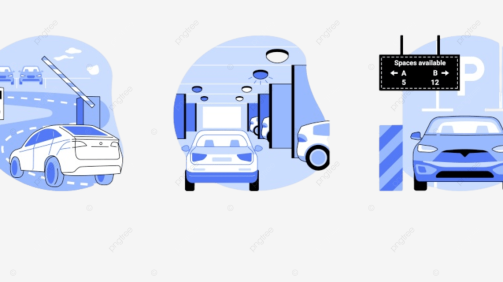As a product manager, I had the opportunity to work on an innovative solution that aimed to prevent theft and unauthorized use of rental cars. It utilized advanced technology and robust security features to protect rental vehicles and provide peace of mind to both rental car companies and customers.
Key Features:
1. GPS Tracking: It was equipped with GPS tracking technology that allowed rental car companies to monitor the real-time location of their vehicles at all times. This feature enabled companies to track vehicles’ movements, identify unauthorized use or theft, and recover stolen vehicles quickly.
2. Geo-Fencing: The platform included geo-fencing capabilities that allowed rental car companies to define virtual boundaries or geo-fences around designated areas. If a rental vehicle crossed these boundaries without authorization, It would trigger alerts and notifications to the rental company, enabling swift action to be taken.
3. Remote Engine Disablement: It offered remote engine disablement functionality, allowing rental car companies to remotely disable the engine of a stolen or unauthorized vehicle. This feature prevented thieves from driving away with the vehicle and facilitated its recovery by immobilizing it until the authorities arrived.
4. Keyless Entry and Ignition: It utilized keyless entry and ignition systems that required authentication via a secure mobile app or RFID-enabled key fob. This ensured that only authorized renters could access and start the rental vehicle, reducing the risk of theft by preventing unauthorized individuals from gaining entry.
5. Tamper Detection: The platform included tamper detection sensors and alarms that alerted rental car companies to any unauthorized attempts to access or tamper with the vehicle. These sensors detected activities such as door breaches, window breakage, or attempts to bypass security systems, triggering immediate alerts and response actions.
6. 24/7 Monitoring and Support: It provided 24/7 monitoring and support services to rental car companies, ensuring round-the-clock surveillance and rapid response to security incidents. Trained operators monitored alerts, initiated recovery procedures, and coordinated with law enforcement agencies to recover stolen vehicles promptly.
7. Comprehensive Reporting: The platform generated comprehensive reports and analytics on vehicle usage, security incidents, and recovery efforts. Rental car companies could access detailed insights into the security status of their fleet, track incidents over time, and identify patterns or trends to enhance security protocols.
As the product manager, I collaborated closely with security experts, automotive engineers, software developers, and rental car industry professionals to develop a robust and reliable solution that addressed the unique security challenges faced by rental car companies. We prioritized user-friendly interfaces, seamless integration with existing rental management systems, and compliance with industry regulations to ensure widespread adoption and customer satisfaction.
Seeing it empower rental car companies to protect their fleets, deter theft, and recover stolen vehicles has been incredibly rewarding. By providing a comprehensive security solution tailored to the needs of the rental car industry, It has made a significant impact in reducing vehicle theft and enhancing the safety and security of rental car operations, and that’s something I’m truly proud of as a product manager.
Tech Stack Used:
Building this platform required a comprehensive tech stack that could support its robust security features and real-time monitoring capabilities. Here’s an overview of the tech stack used to develop this system.
1. Backend Development:
– Node.js: Node.js served as the backend runtime environment, providing scalability and efficiency in handling asynchronous I/O operations.
– Express.js: Express.js, a web application framework for Node.js, facilitated the development of RESTful APIs and routing for handling requests from the frontend and mobile applications.
2. Database:
– MongoDB: MongoDB was chosen as the database management system due to its flexibility and scalability. It allowed for the storage of vehicle data, user information, and security events in a document-oriented database format.
3. Real-Time Communication:
– Socket.IO: Socket.IO was utilized for real-time communication between the platforms backend server and connected devices, such as vehicles and monitoring consoles. It enabled bi-directional communication and event-based messaging for instant updates and alerts.
4. Mobile Application Development:
– React Native: React Native was used for developing the mobile applications for it on both iOS and Android platforms. It allowed for the creation of cross-platform mobile apps with native-like performance and user experience.
– Redux: Redux was employed for state management in the React Native applications, providing a predictable and centralized state container for managing data flow and application state.
5. GPS Tracking and Mapping:
– Google Maps Platform: It integrated with the Google Maps Platform for GPS tracking, geolocation services, and mapping functionalities. It enabled real-time tracking of vehicle locations, geofencing, and visualization of vehicle routes on maps.
6. Authentication and Security:
– JSON Web Tokens (JWT): JWT was used for authentication and authorization, providing secure and stateless authentication tokens for user authentication and access control.
– OAuth 2.0: OAuth 2.0 was implemented for secure authentication and authorization between the system and third-party applications or services, ensuring secure data exchange and user authentication.
7. Deployment and Hosting:
– Amazon Web Services (AWS): AWS was chosen for cloud hosting and deployment of the backend infrastructure, providing scalable and reliable cloud computing services, such as EC2 for virtual server hosting and S3 for storage.
This tech stack enabled the development of this platform as a robust and secure solution for preventing vehicle theft and unauthorized use in the rental car industry. By leveraging modern technologies and frameworks, it could deliver real-time tracking, security features, and seamless user experiences across web and mobile platforms.




